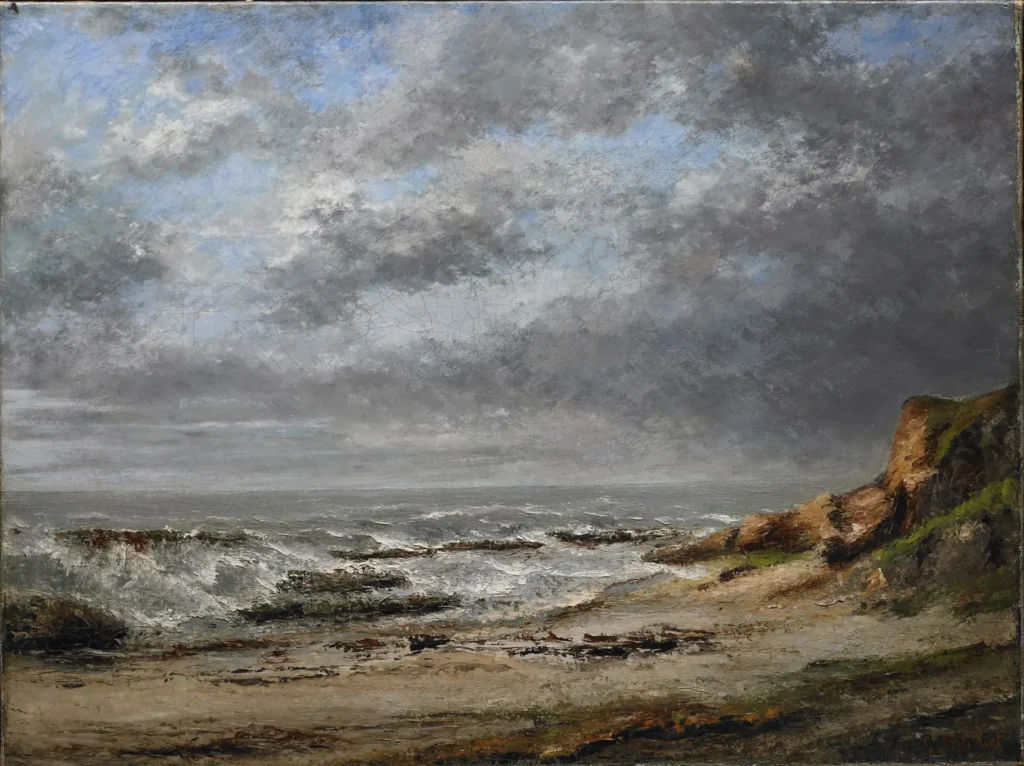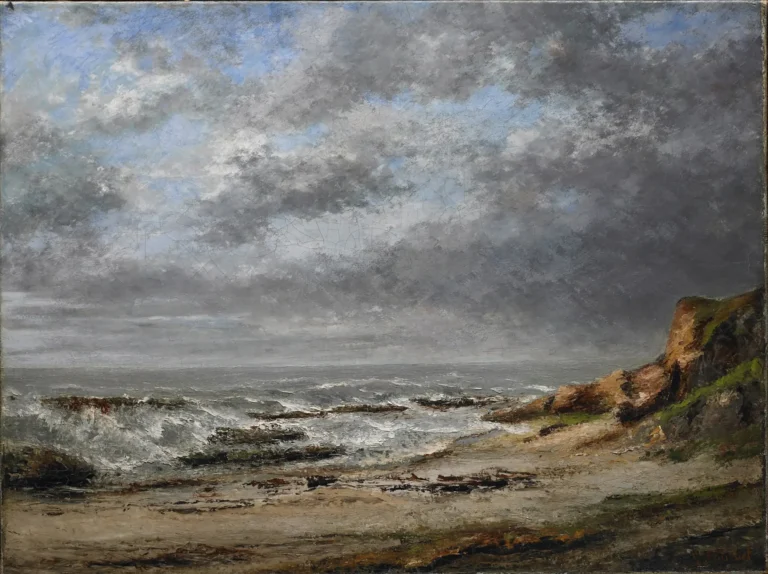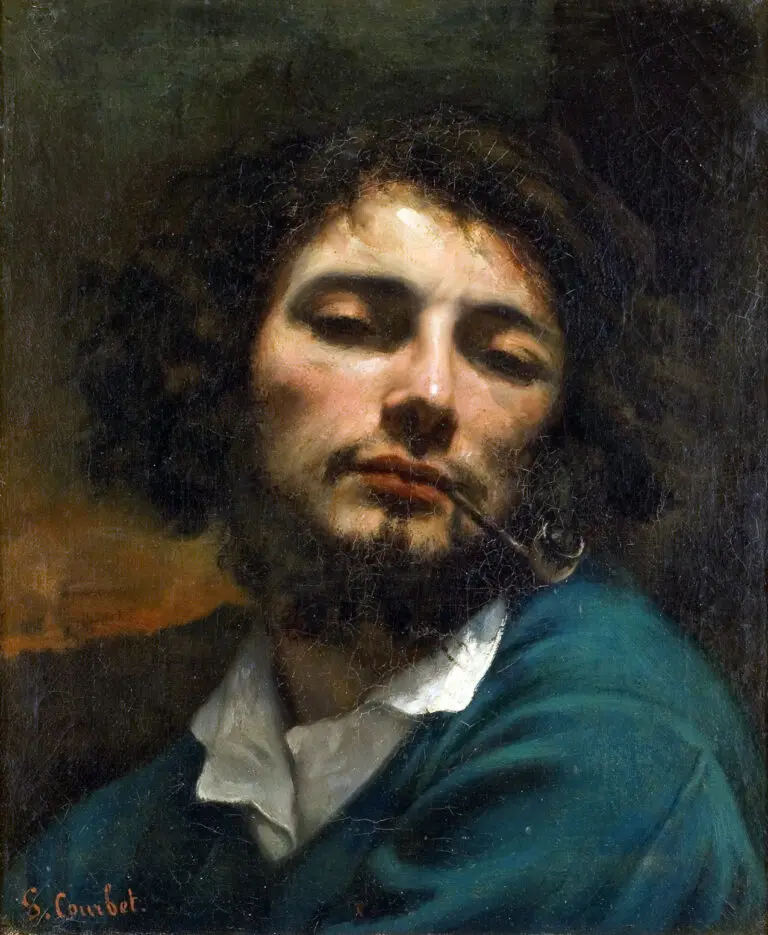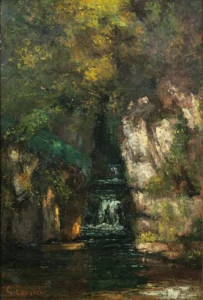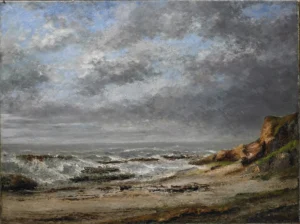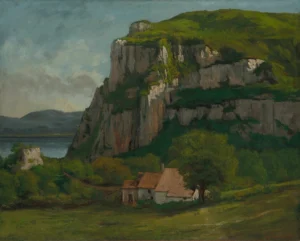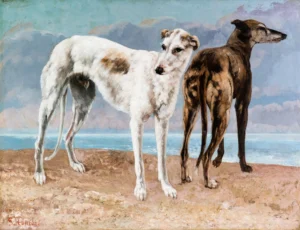View of a rough sea near a cliff (1873)
Created after 1873, View of a rough sea near a cliff is a significant oil on canvas painting by Gustave Courbet, a prominent figure in Realism. Measuring 61 x 81 cm, this artwork portrays the dynamic force of the sea, with waves crashing against a rugged cliff. Courbet’s skillful handling of paint and keen observation of nature are distinctly evident, emphasizing both the beauty and ferocity of the natural world, which was a hallmark of his style.
After 1873
About the Artwork
Did You Know
Liked what you see? Add it to your collection.
Enjoyed reading? Share it.
... continued
Artist and Period
The painting is the work of Gustave Courbet, a leading figure in the Realism movement of 19th-century French painting.
Date
The painting was created after 1873, during the later part of Courbet's career.
Medium and Dimensions
It is an oil on canvas painting, measuring 61 x 81 cm (or approximately 24 x 32 inches).
Description
The painting depicts a tumultuous sea scene with waves crashing against a cliff, creating a powerful and dynamic visual effect. This work showcases Courbet's skill in capturing the raw energy and irregularities of nature, which was a hallmark of his Realist style.
Style and Significance
Courbet's Realism focused on direct observation and the spontaneous handling of paint, emphasizing the harshness and realities of life rather than idealized or perfected forms. This approach is evident in View of a rough sea near a cliff. where the artist captures the natural world in its raw and unbridled state.




